Something for everybody
Documentation of the exhibition
Réalisation : Alain Domagala
Vision Center presents a row of chairs facing blank screens made of floor mats and various packaging, establishing a correlation between objects without qualities and projection surfaces, image screens. The chairs make up a collective or a club, but the regulated distance between each and the screen facing it (1.6 x diagonal length) individualizes the users.
The heterogeneity of the chairs that span the history of design, the identitary, social and economic hierarchies, as well as the size difference between the screens (negated by the variable distance between the chair and the wall) share a common condition: they form a network in time devoid of connections in space. Although the idea of the future is inevitably collective it bases itself on technological tools that define an individual, personalized use.
A monitor that shuts down regains its object-condition. It becomes a black square, a projection chamber, that more potently emits residual memories. It can then function like a monochrome in art history, a “tableau-objet” that contains everything, a support for discourse mobilizing different and at times contradictory political and esthetic positions.
These screens simultaneously materialize our relation (psychotropic according to Finizio) to reality and as such to art: how else can we become so enthused with cubes and parallelepipeds or the organisation of colors and materials?
The objects are necessarily informed by the discourse that reactivates the scenario of a chair and a scrap object.
Pedro Morais, 2012, excerpt from the exhibition press release
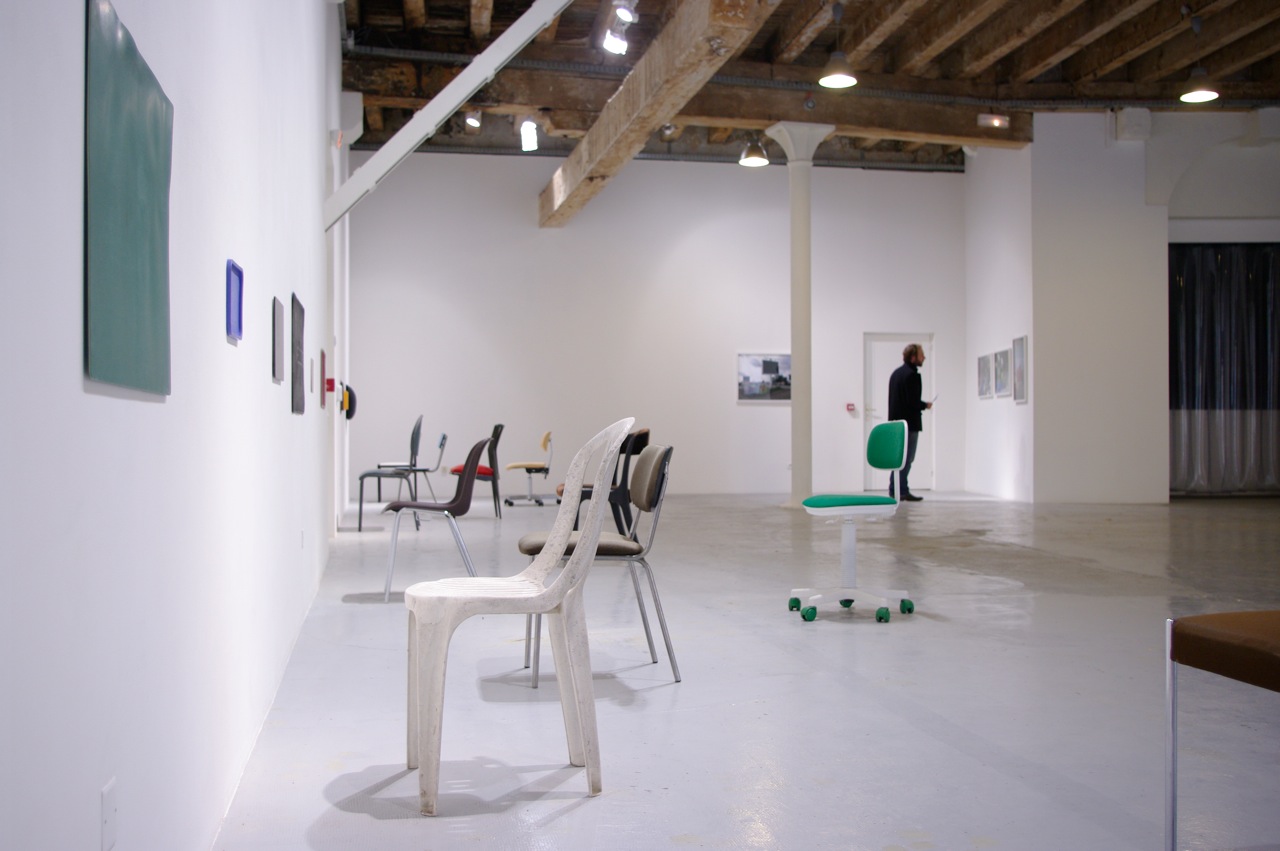
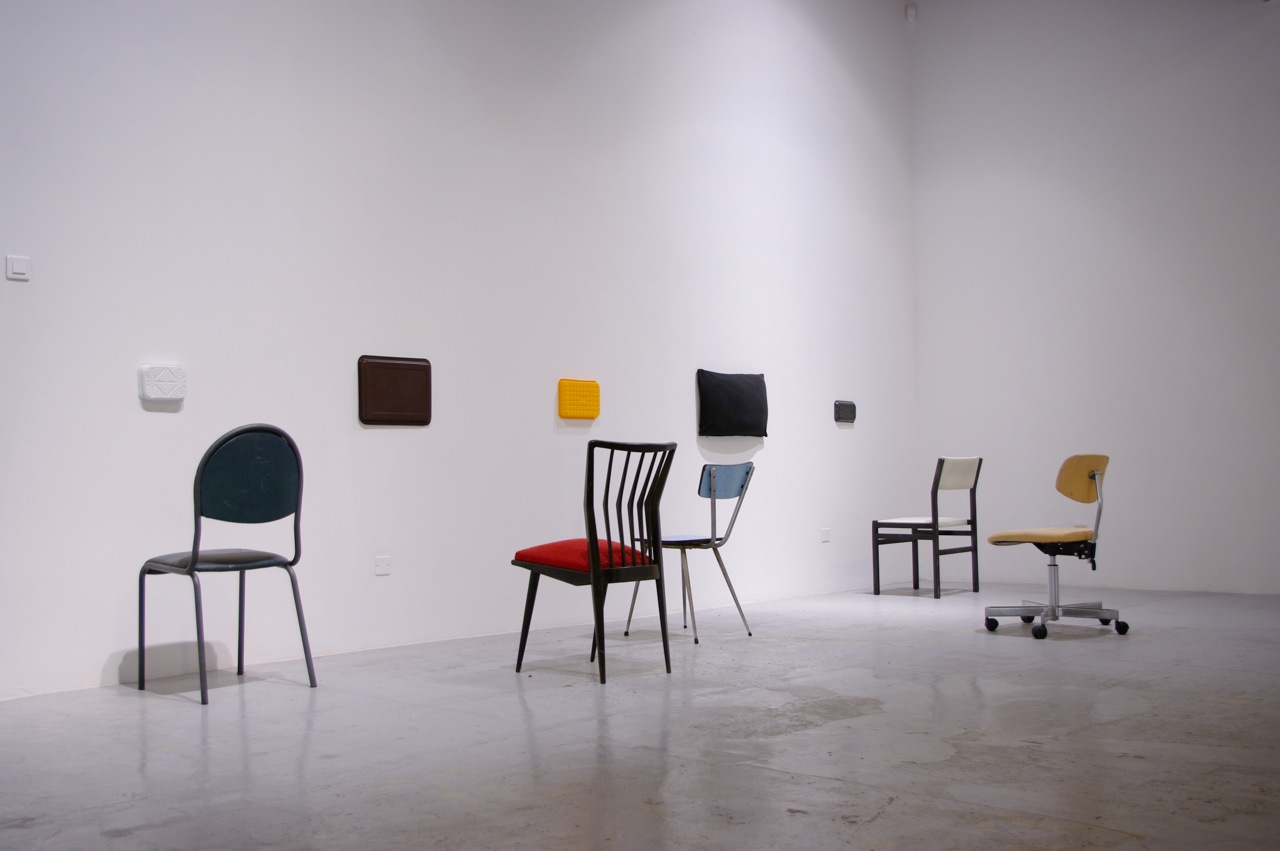
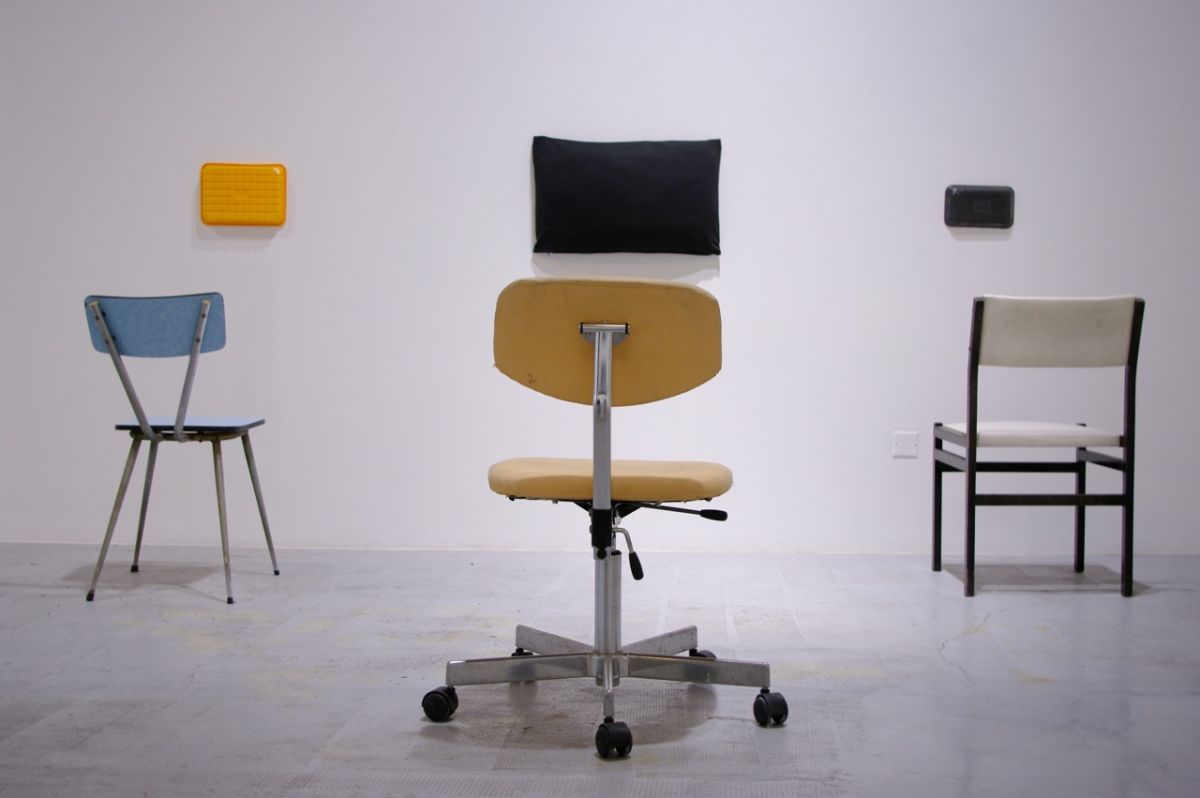
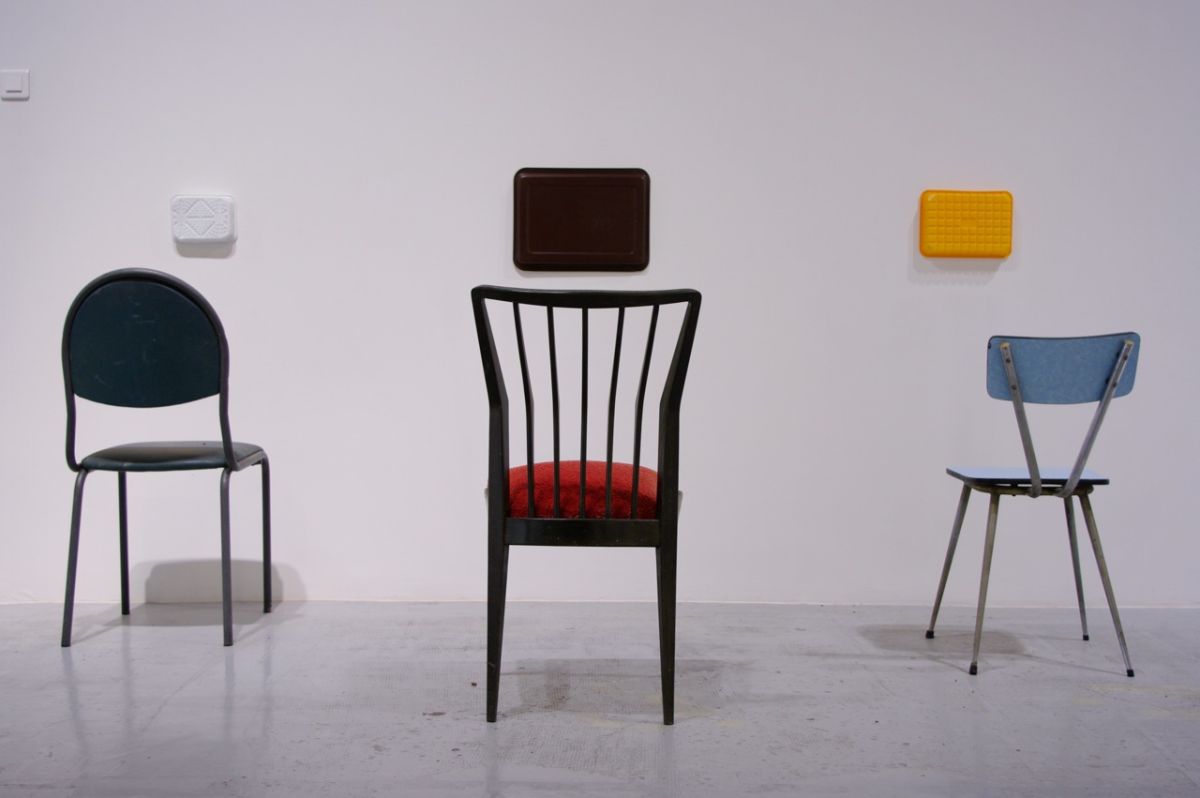

Vision Center, 2012
Chairs and various salvaged rectangular objects suggesting screens.
Photos : Francesco Finizio
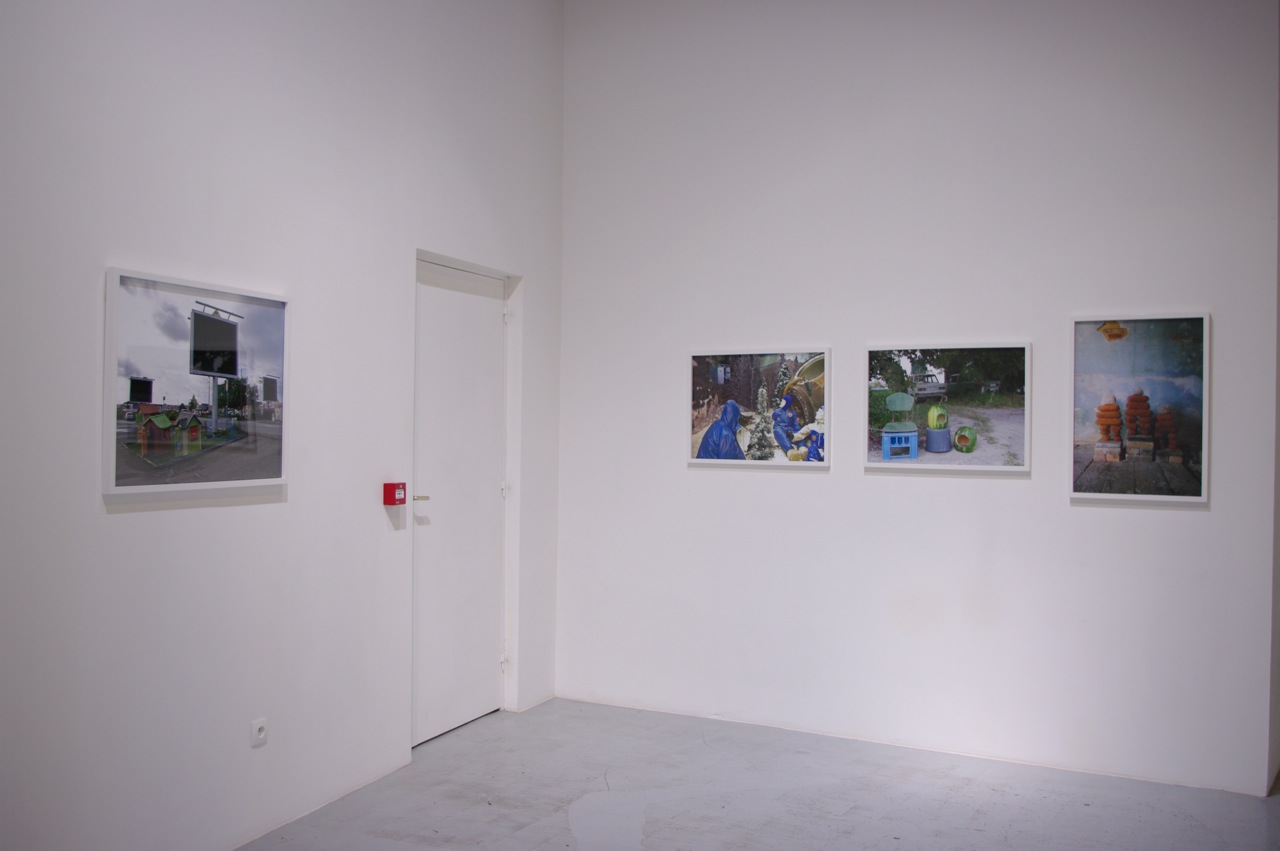

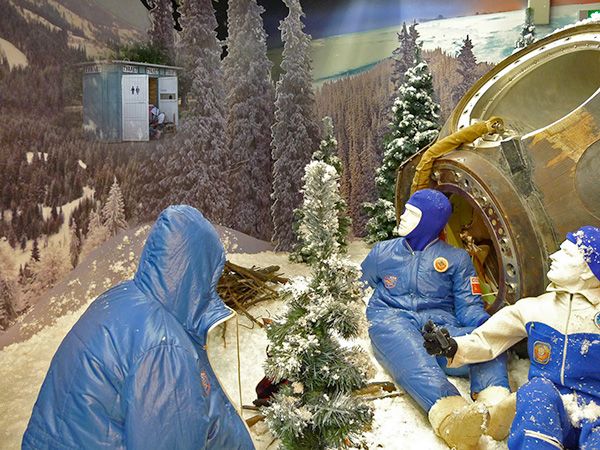
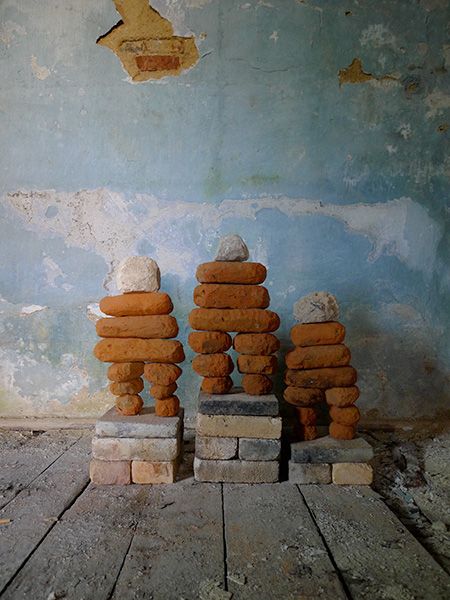
Shargorod journal (extraits), 2010
photographies
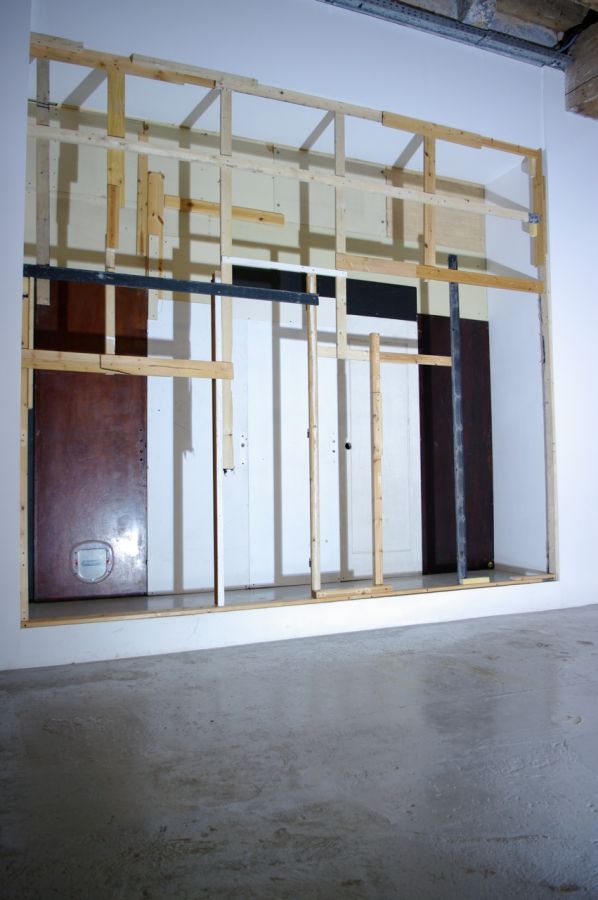


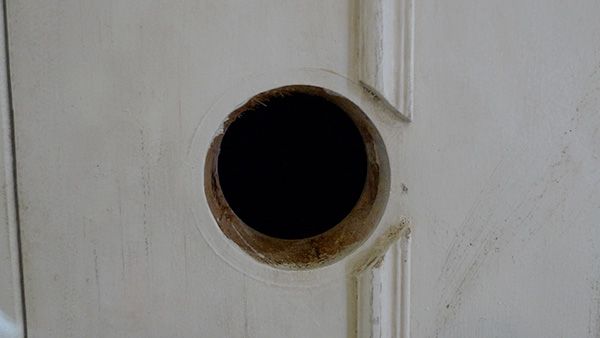

Progress plaza / Pussy palace, (Une succesion d'ouvertures/fermetures intégrant des composants prospectifs pour sonder le potentiel des stratégies de marchés de niches), 2012
Photos : Alain Domagala
…) in his most recent exhibitions the artist also transforms the gallery space scenario, literally condemning one of the rooms, walled shut with scrap wood and planks. This closing opens up another space, a backroom or storeroom for subconscious clutter that seems nonetheless to retain some functionality through the presence of a small cat door at ground level. To see Progress Plaza one must therefore get down on all fours, like a quadruped. On the other side plates of dry cat-food can be perceived as satellites or spaceships, offering the vision of a low-budget cosmos or discotheque decorum…
Pedro Morais, 2012, excerpt from the exhibition press release
Visionquest, 2012 (Extrait de 1,37 minutes)
Vidéo de 7 minutes
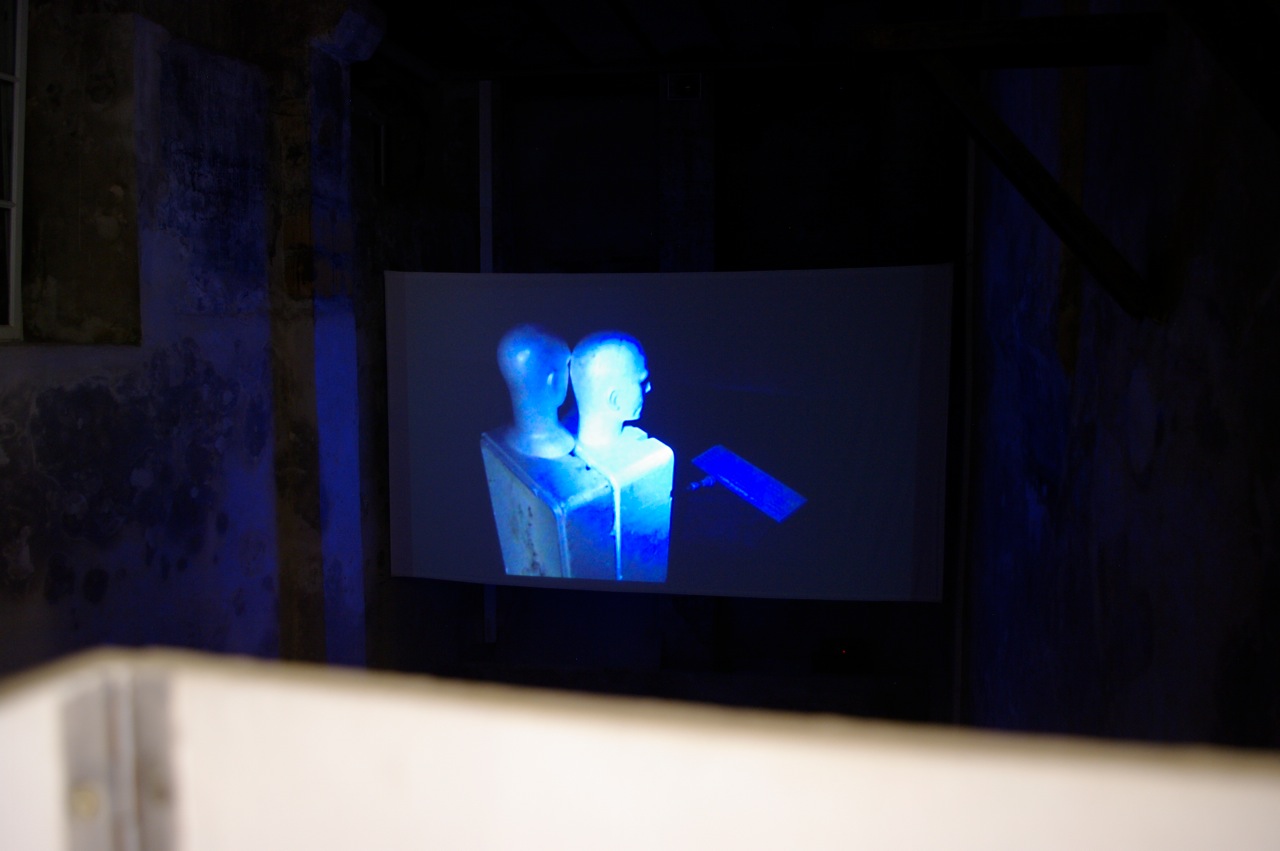
« If I remember correctly, American astronauts ate ice cream during their travels” says one of the styrofoam robots in the video entitled Visionquest.
Francesco Finizio prefers to speak of ex-humans rather than robots, entities that fabricate a future memory of the earth’s inhabitants.
Or else humans, who in a distant future, will have entirely transformed their psychic, theoretical, and emotional framework with regards to what we knwo today.
the film recounts a voyage that goes from space conquest to thoughts about survival, the heat, and fast food.
This tension between the infinitely large, the ambition of thought and the most banal dimension of eevryday production, consumption and accumulation runs throughout the exhibition.
These robots/ex-humans without qualities who all speak in the same fake synthetic voice seek to produce emotions they no longer need.
The nostalgia for mother’s sandwiches becomes an image of life on earth that rapidly vanishes when our protagonists are faced with the fact that mothers are “foreign bodies” to them. The desire to eat ice cream also wanes when they realize they must move to find some. To be honest, they don’t even need the bodies they have.
Just a click and a credit card away, all needs (real or imagined) are within a finger’s reach. All stakes are then calculated in terms of connections, usefulness, speed, mail-order shopping, globalized prodcution, time management, the workplace, solitude, the organization of sexuality and bodily hygiene. It boils down to increasing the inert body’s capacity: a finger, a computer screen, and pizzas on command. The paradigm og global nourishment, pizza can be slid easily under one’s door, without even the need to cross paths with those who deliver it. And, even the worst pizza finds its public”.
Pedro Morais, 2012
Excerpt from the press release Something for everybody, Exposition à Vidéochroniques, Marseille, A partnership between Vidéochroniques and Technè within the context of the Festival RIAM-09-NOW FUTURE.